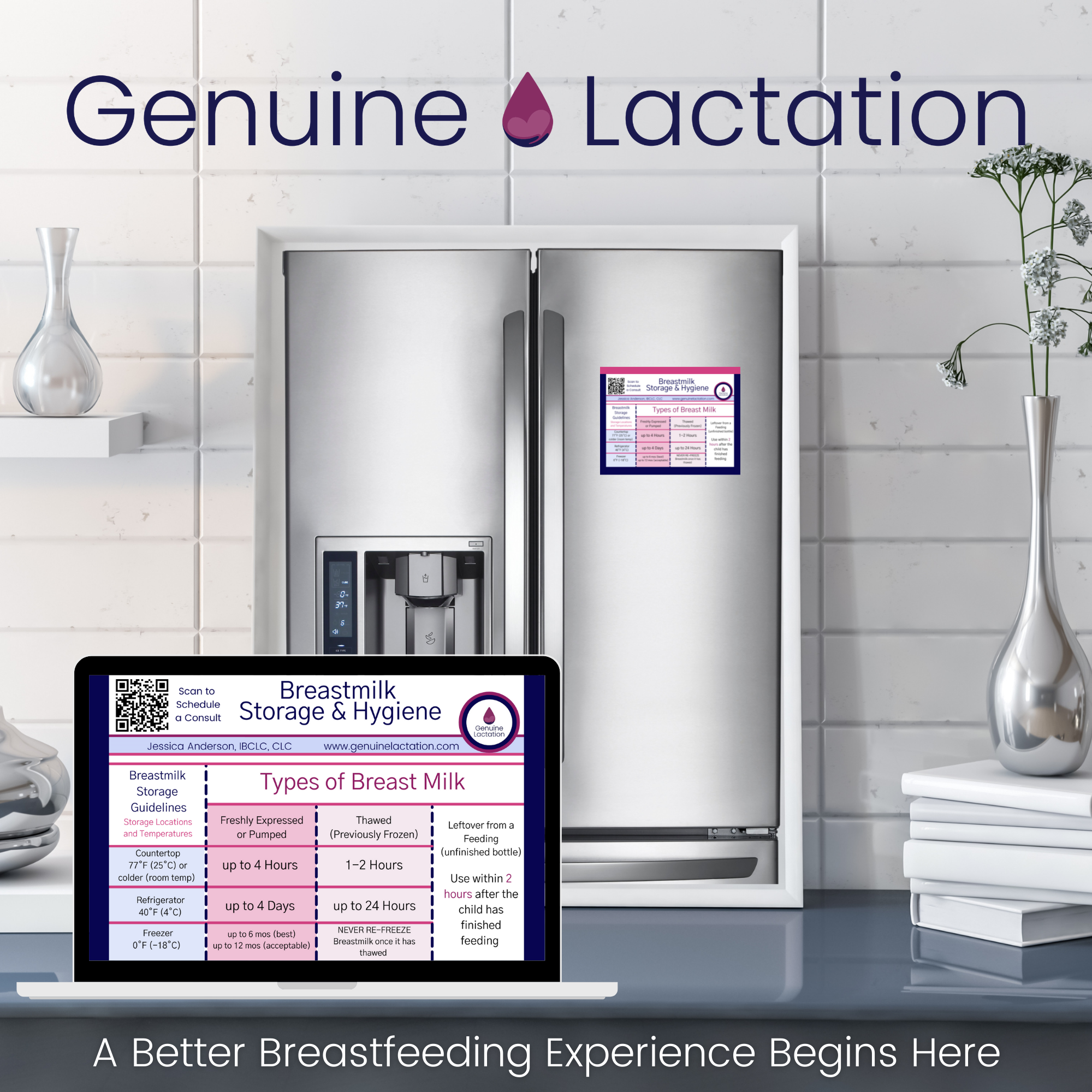Mixing Milk of Different Temperatures
Can you mix milk at different temperatures?
What happens if you dump freshly pumped milk in with refrigerated milk?
Would that milk still be safe for your baby?
Order your refrigerator magnet with the proper breastmilk storage guidelines for you to use. © Genuine Lactation
Milk handling guidelines are designed to protect the safety of expressed human milk for the most vulnerable of babies. The aim is to make sure that any human milk handled in this manner would be safe for even the most vulnerable of babies. There is fairly limited incentive for anyone to study or test how far from these guidelines we can safely stray without causing issues as it could create a fairly complicated series of rules in which parents would be expected to assess where their individual baby fell on the spectrum of safety. While this isn’t a problem for most parents it could jeopardize fragile infants safety when their parents are not able to discern why they need to follow more stringent milk handling rules. Therefore, we go with a one size fits all approach.
This particular milk handling rule is related to basic food handling principles in which we don’t want to repeatedly heat up previously cooled food. These types of temperature fluctuations are a concern for increasing opportunities for bacteria to multiply and contaminate the food.
So is breastmilk the same as food?
Breastmilk is food, but it’s not identical to other types of food. Breastmilk is a living tissue complete with antibacterial, anti-fungal, and anti-parasitic properties. The white blood cells in breastmilk are designed to help your baby fight infections.
This article takes several reputable studies and breaks them down into practical information to help you decide what is right for your baby.
So is it safe to mix different temperatures of milk?
The official answer is no. It’s not classified as a safe practice under the guidelines designed to protect even the most vulnerable of babies.
The unofficial answer is that you are going to come across millions of options in parenting where what works for you is in direct conflict with the “perfect advice.” Use your best judgment about your baby’s health and make the choice that is right for your family. And always remember if we don’t have evidence of harm from most of these practices in full term healthy babies that is likely because it’s alright for full term healthy babies.
If you choose to mix milk temperatures be conscientious of the main source of milk contamination being improperly washed or sterilized pump parts. If contamination has happened, and then best practices are altered, the opportunity for harmful bacteria to flourish is heightened.
The most common reason parents would be mixing different milk temperatures would be use of the pitcher method, in which all pump sessions output are mixed in one large container and then bottles are portioned out from this pooled milk. This is often done to standardize milk in the case of a large oversupply, or to make exclusive pumping a bit easier when it comes to storage and bottle prep.
If you are using wanting to use the pitcher method, the best practice would be to cool the pumped milk first then add to the pitcher. This however is a parental choice, and the research does not back concern for this practice in full term healthy babies.
If you are struggling to figure out how to make strategies like this work for you, reach out and I will help you evaluate your options without judgment. We are all just trying to do the best we can.
View Related Articles…

